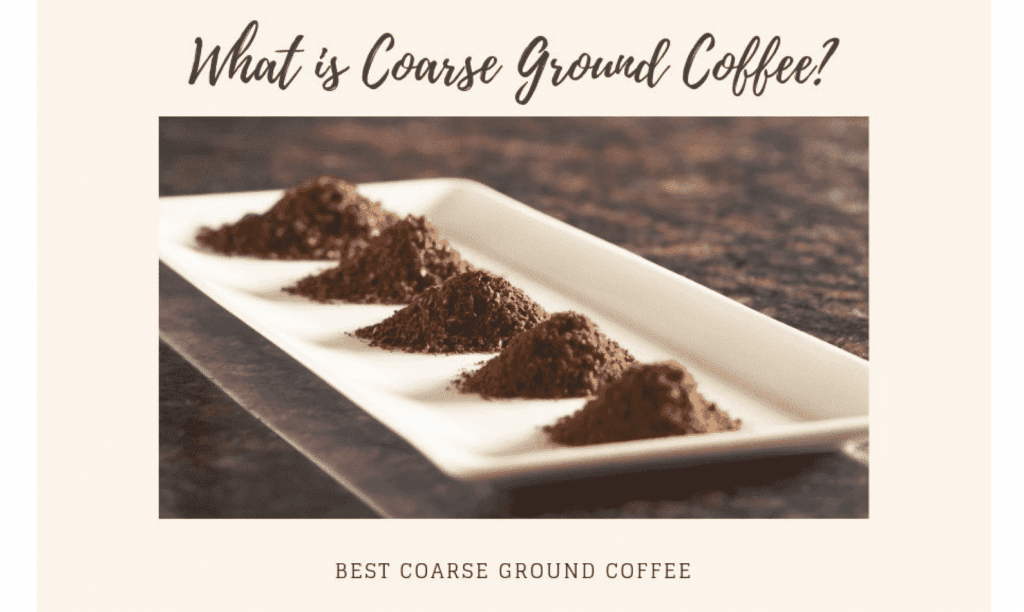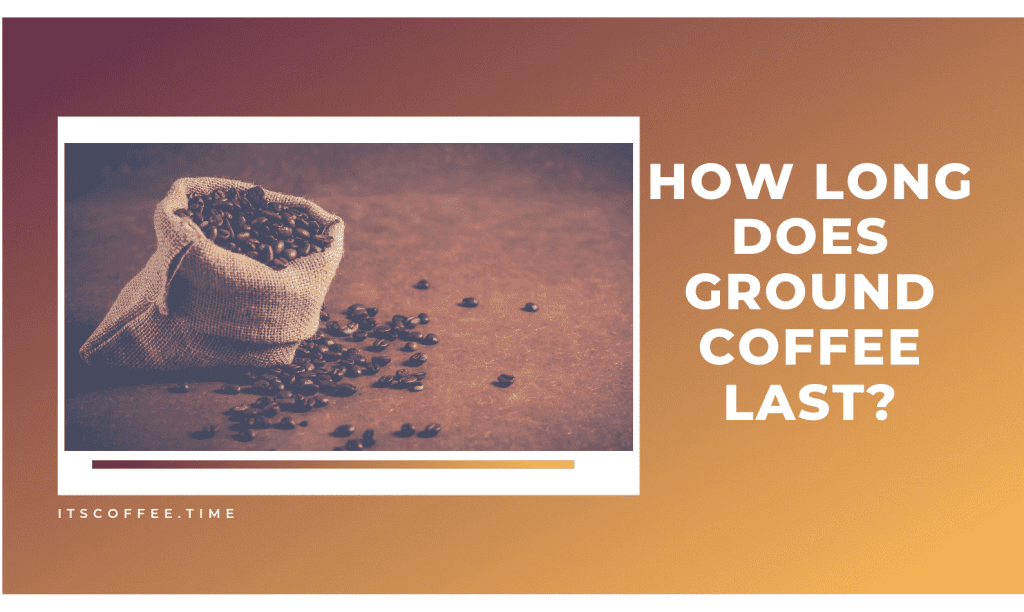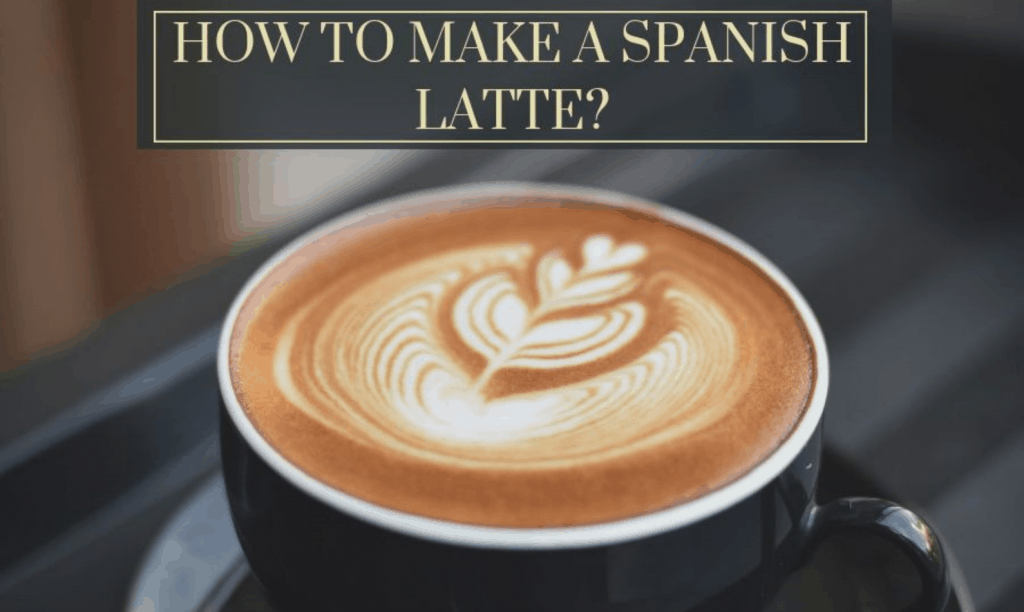Coarse Ground Coffee: The Art of Grinding: Nothing is more refreshing than starting your day with a fresh cup of coffee. Well, coffee is just a mixture of beans and hot water. If we put it in a simplified way, coffee is:
- Water
- Ground Coffee Beans
- Sugar/ Milk/ Cream
- Heat
Grinding is simply a means to say that coffee beans should be in a state between powder-like consistency and small crystals. The rarity of the grinds will affect how quickly coffee is extracted and brushed.
Actually, choosing the right coffee isn’t an easy task. It would help if you also considered grind size/coarseness besides deciding on a coffee bean for the flavor. What I mean by the coarseness of the coffee beans is the size of the coffee beans. A gross grind is where we grind just a bit, which leads to large pieces of coffee beans. An excellent grind is where we grind our beans until they become a sticky texture of the powder.
What is Coarse Ground Coffee? Why is Grind Size an issue?
You’re probably already aware that shooting this stuff together and hoping the best will not do good to the coffee.
Therefore, we need to master a brew ratio, for example, the right temperature, the correct coffee beans, the right coffee volume, the right water volume, and the right extraction time.
This is going to be right for us, most of our modern coffee machines. Even the manual French Press and Moka pot are specific sizes to stop us from going horrifically wrong regarding this ratio.
But still, a cup of coffee can taste terrible. The solution is that we refine our coffee coarseness.
- With a coarse grind of coffee, our hot water binds to the outside of the individual grinds. It absorbs the flavor as it slowly penetrates to the center of each grind.
- With a fine grind of coffee, our hot water binds to the outside of the individual grinds in the same way; however, as the grinds are much smaller, the water can penetrate and extract the flavor much quicker.
Fine grinds = fast grinding time
Coarse grinds = slow grinding time
This is why the coffee grind coarseness can have a high effect on our finished coffee drink taste.
The Importance of Grind Coarness
You use freshly roast beans of the highest quality, you control the temperature, you use the purest possible water, and you can make your brewing game on the right track, take the coffee at exactly the right time and with the exact delicacy, and still get a bad taste. This can happen even if you use a very high-end machine that is always the perfect temperature and bridging time. What is the problem? The answer is written in the title.
The grind size is how coarse or fine you grind your coffee beans. As any barista worth their salt (or coffee) knows, the best and freshest tasting coffee will always be freshly ground from freshly or as freshly as possible roasted beans.
Depending on the brewing method, you’ll need to adjust your grind size-sometimes you’ll need a very coarse grind, and other times, you’ll need an excellent grind. Still, other times, you’ll want something in between.
This is because of simple science: increasing surface area. A coarse grind mixes less coffee to water if put, whereas a finer grind exposes more coffee to water. It’s the same science behind why granulated sugar will dissolve quickly. The water interacts very gradually with the coffee, extracting the flavor of the grinds softly. With a thin grind, the water interacts very rapidly with the coffee and extracts much flavor in a short time.
Types of Grinds: Coarse Ground Coffee
I’m going to mention 7 grind levels to get you started. Probably their more levels to this – thanks to great brewers from all around the world.
Extra Coarse Grind
- Cold Brewing
Coarse Grind
- French Press Pot
- Cupping
Medium-Coarse Grind
- Cafe Solo Brewer
- Chemex Brewer
Medium Grind
- Drip Pots
Medium-Fine Grind
- Pourover Cones
- Vacuum Pots
- Siphon Brewers
Fine Grind
- Espresso
- Stovetop Espresso / Moka Pot
Extra Fine Grind
- Turkish Coffee
Which Grind is Perfect for You? Coarse Ground Coffee
Some coffee makers are more suitable for different ground levels-and of course, the drink you try to make dictates the grinding size you want. Generally speaking, you will need fine grinds if your extraction procedure is fast, but you will need coarse grinds if it is slow.
Use this short grinding size table to find where to begin-don’t be afraid to approach the test of a premium coffee taste with some variations in your grind size!
Aeropress
Aeropress coffee is a relatively new entrance into the coffee world, but a storm surely brings it because the process of extraction is super fast and easy to use. As extraction is fast, you guessed that you’re going to need fine terrain. You end up with under-extracted coffee if the grind is to ground.
Of course, you can let the coffee sit in the airplane for a little longer for more extraction time if you are stuck with coarse grinds such as a hand grinder.
With Aeropress, you need finely to medium size grinds, although most Aeropress models are adjustable. Aeropress works almost the same way as an Espresso, forcing water quickly to grind through your coffee instead of brewing it. It would be best if you had more sophisticated grounds for this rapid extraction so that the water actually penetrates the coffee molecules. Gross grinds in like an aircraft that will result in the kind of coffee that has been seriously under-extracted unless you wait for years to brew it.
Drip Coffee & Pour Over
Drip coffee and pour over are brewing techniques to get water through the coffee pot using the strength of gravity; basically, you let gravity do all the work. Although it is not as fast as espresso, the water and coffee still do not have a barrier underneath, so the coffee will only fill in the cafe, filter, and end up in the coffee pot. Drip and pour-over methods usually require a medium-sized ground. Although the air press and the espresso machine are not driven through the water so quickly, nothing stops the water from running directly through the coffee.
You’ll want medium-fine grounds to make the best drink and pour coffee. This maximizes the area without making the terrain so fine that your coffee becomes over-extracted. The slow, consistent stream of water provides sufficient flavor, without over-extracting, with a medium-fine grinding.
Eespresso, Cappachino, Macchito & Lattes
I combined all these into a single section because all of these coffees have espresso shots. Actual espresso machines need 9 bars of pressure to draw a shot. These are expensive machines that take up a lot of workstation space in the kitchen. Before using fine grinds, make sure you have an espresso machine and not a coffee-making plant that is extremely strong.
Espresso is produced very quickly and at very high pressure, with exact temperature. As the pressure increases, the water/steam will be forced into the coffee ground you have buffed, and you will have a delicious Espresso shot within a few seconds.
To maximize the surface area, you need superfine grounding to ensure maximum extraction in the least amount of time. The terrain should feel very soft and smooth-it needs to be soft. You have under-extracted and less delicious coffee when the broths are too coarse.
For espresso machines, fine ground coffee is essential. Water is pushed through the mash in 30 seconds-grinding size constancy, group handle distribution, and a correct coffee volume ratio is essential. You will have under-extracted coffee if your grind is too coarse. You’ve both under-extracted and over-extracted coffee in the same cup when it’s not consistent!
French Press
For your French press, you’ll need coarse grinding. Unlike drips, espresso, and Aeropress, for a long time (usually a few minutes), your French press will soak coffee mixtures into the water, which is quite long in the world of coffee mining.
Using finer grinding, water has better molecular access to coffee and extracts coffee aromas and oils much faster-leading to coffee being over-extracted. In general, your grounds are too fine if you fight to push this plunger down.
Generic Coffee Makers
Medium to medium-fine grinds, which drip or use some energy to thrust the water through the grinds, usually make the best of these coffee-making makers. Like us, coffee Dorks do not operate most basic coffee makers (the boring coffee that is available in offices around the world). They have a set extractive time-it is important to find and adhere to the correct grind size. It is not programmable for various extraction times, so as long as you know it’s the best coffee with the medium grind from the brand, do not deviate from it! This applies to basic brewers only.
Moka Pot
A fine grind like an expresso is generally required in your Moka pot or stovetop coffee maker. A Moka pot transforms water into steam that passes through the coffee grinds to the room’s top. The bridging process is swift, so it’s necessary to grind a fine grind to get the optimum intensity and flavor of coffee, but fine ground coffee may not be as fast as an Espresso. The steam needs to be slim sufficiently fine to allow the water molecules to plump and lift through the coffee. The combination of fine grinding and long removal time usually leads to robust coffee.
Read more about How To Roast Coffee beans at Home: Different Methods
Conclusion: What is Coarse Ground Coffee?
I didn’t expect this much detail on your coarse ground coffee beans. Now, you can differentiate between coarse vs. fine ground coffee. Well, elegance has no bounds. Slight increments are what’s needed to get the taste you like, certainly. Espresso is probably the most important since Espresso is a coffee microcosm and is under pressure, so the slightest change in the grind can lead to a notable result. Good luck with the adaptation of this precious art!






